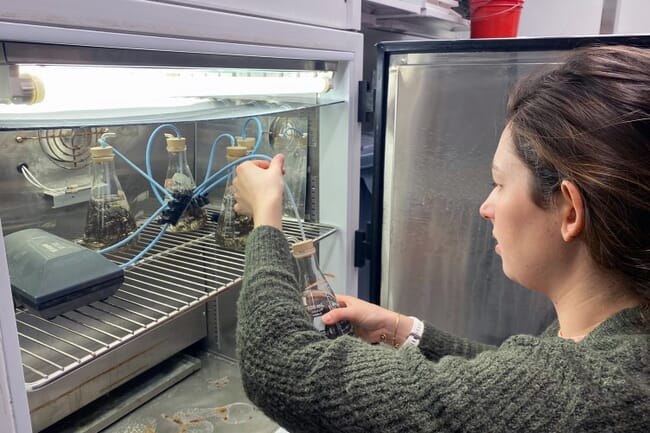
© University of New Hampshire
New research conducted by researchers from the University of New Hampshire (UNH) has found that integrating shrimp aquaculture with the farming of oysters and seaweed – a method known as integrated multitrophic aquaculture (IMTA) – can significantly reduce the nitrogen emissions produced during farming.
As it stands currently, the demand for shrimp is booming, with much of the demand coming from the global West and being met by an industry largely based in Asia. However, one of the most pressing challenges faced by the shrimp industry in its current state is the lack of environmental regulation, which has led to severe results such as nutrient pollution, harmful algal blooms, and biodiversity loss.
“Much of the shrimp we consume comes from overseas, where they don’t need to follow the same environmental regulations as we do here in the U.S.,” said Elizabeth Martin, the lead researcher of the study, in a press release.
Seeking to drive change within the shrimp industry, and move farming practices towards a more environmentally conscious approach, Martin and her fellow UNH researchers devised a study to test the ability of oysters and seaweed to absorb the excess nitrogen released during shrimp farming.
“We had three treatments – shrimp with the seaweed, shrimp with the seaweed and an oxygenator, and shrimp with the seaweed and oysters,” said Martin.
“What we found was that the final treatment, the shrimp with the seaweed, which absorbs and stores nitrogen, and the oysters resulted in a reduced level of nitrogen -including ammonia, nitrite and nitrate - over time,” she explained.
Not only would this novel approach improve the environmental impact of shrimp aquaculture, but it may also provide the opportunity for farmers to diversify their operation, with oysters and seaweed being a valuable by-product.




